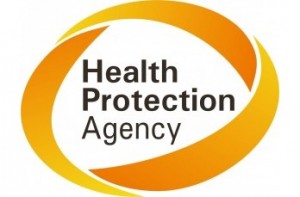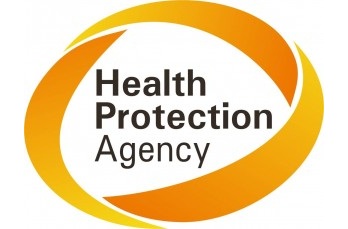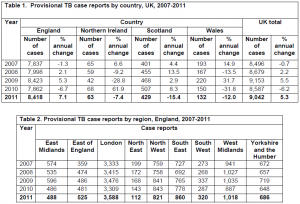Provisional figures released today by the Health Protection Agency (HPA) show there were 9,042 new cases of tuberculosis (TB) in the UK in 2011. Compared to provisional numbers reported in 2010 (8,587), this is a five per cent increase.
 |
| [relatedPosts title=”Related Posts”] |
|
|
The figures, released in the HPA’s annual TB newsletter ahead of World TB Day on Saturday 24 March, show the main burden of this infection is still in London with 3,588 cases reported in 2011, accounting for 40 per cent of the UK total. According to the provisional data, country of origin was recorded in 8,453 new cases, and almost three quarters (6,270) were in non-UK born people.
TB is an infection caused by bacteria. It usually affects the lungs, but can affect other parts of the body. TB is transmitted when someone who has the infection coughs or sneezes, but it requires close prolonged contact in order to spread from person to person.
Professor Ibrahim Abubakar, head of the TB section at the HPA, said: “Despite the observed increase in TB cases in 2011, this provisional data should be interpreted with caution because numbers are likely to change due to late notifications and de-notification of cases. It is therefore too early to determine whether this is a return to the upward trend of cases seen in the past two decades in the UK.
“TB continues to disproportionately affect those in hard to reach and vulnerable groups, particularly migrants, so it is crucial that we have specific strategies in place to address this. New guidance published today by the National Institute for Health and Clinical Excellence aims to tackle some of the issues which health services encounter when trying to target TB prevention at hard to reach groups, such as immigrants, homeless people, problem drug users and prisoners.
“The HPA welcomes the guidance which provides useful and comprehensive recommendations on the best approaches to identifying TB in vulnerable individuals, as well as ensuring they complete treatment. We also welcome the recommendation that makes local health services responsible for producing plans tailored to meet the needs of their local area.
“In order to reduce TB cases in the future, it’s very important that health commissioners, especially in parts of the country with the highest rates of TB, prioritise the delivery of appropriate clinical and public health TB services.”
Both health professionals and the general public should be aware of the following key, simple facts about TB:
- TB can be fatal if not treated
- TB is usually curable with a six-month course of antibiotics which must be completed
- Not completing the full course can encourage drug resistance
- TB disease develops slowly in the body over a period of several months
Symptoms are: fever and night sweats, persistent cough, weight loss, blood in your sputum (phlegm or spit) at any time, a lack of appetite, fatigue and a general sense of feeling unwell
- The infection requires prolonged and close contact in order to spread from person to person
- Under half of cases in the UK have the infectious form of the disease
- Most cases present little or no risk to others
- It is very uncommon to catch TB from a child with the disease
- TB treatment is free for the patient in the UK
Further Information
- For a copy of the HPA’s annual newsletter visit here.
- For a copy of the NICE guidance visit here.
- Breakdown of figures:
- Over nine million new cases of TB, and nearly two million deaths from TB, are estimated to occur around the world every year. TB is the leading cause of death among curable infectious diseases. The World Health Organization declared TB a global emergency in 1993.
- World TB Day is on 24 March each year and it aims to build public awareness about TB, reminding people that it is a global epidemic and causes several million deaths each year, mostly in developing countries. It commemorates the day when in 1882 Dr Robert Koch discovered the cause of tuberculosis, the TB bacillus (which is a bacteria).
.






